This National Park Road Trip Covers 12 of America's Best Parks in One 5,600-mile Route

Here's what you need to know to drive the route yourself.
In the early 1900s, U.S. national parks were largely playgrounds for the wealthy. Visitation often numbered in the tens of thousands, with itineraries fulfilled via expensive rail tickets, stagecoach tours, and horseback rides.
When automobiles arrived on the scene, the average American had a chance to hit the open road and see the country like never before. But in this case, the “open road” was a muddy path or dusty trail, if it existed at all. And our national parks were still wild expanses barely fit for mules.
So, in 1920, 12 Americans — representing groups like the National Park-to-Park Highway Association and AAA — set out from Denver, Colorado, for a 5,600-mile road trip, lassoing 12 national parks into one massive loop. Their goal? To draw publicity and tourism to the country’s public lands and to push for drivable roads that connect them.
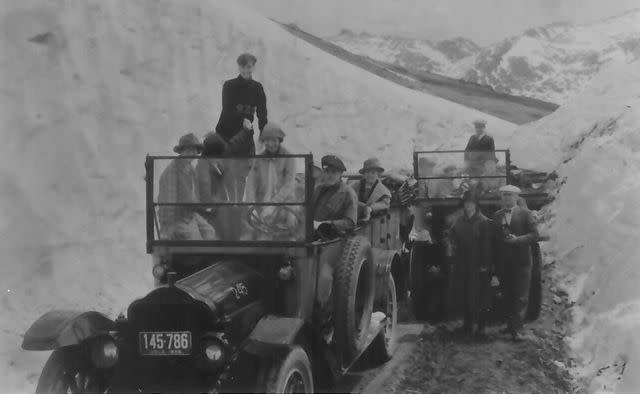
Rocky Mountain National Park museum collections
Thus the great national park road trip was born. Today, the scenic tour through seven states remains one of the best ways to see our public lands.
The 12 stops on the national park road trip are:
Rocky Mountain National Park
Yellowstone National Park
Glacier National Park
Mount Rainier National Park
Crater Lake National Park
Lassen Volcanic National Park
Yosemite National Park
Sequoia and Kings Canyon National Parks
Zion National Park
Grand Canyon National Park
Petrified Forest National Park
Mesa Verde National Park
Rocky Mountain National Park
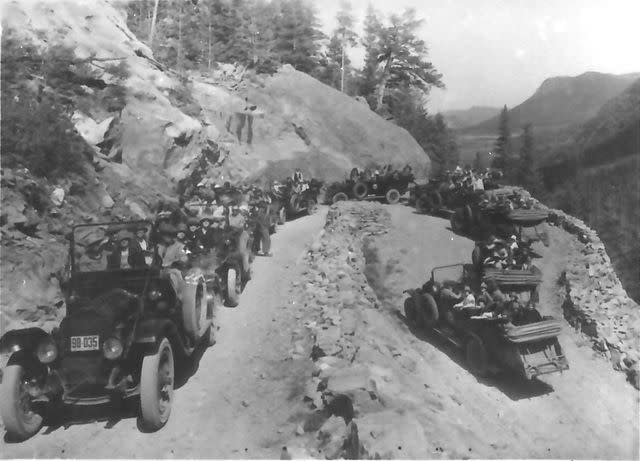
Rocky Mountain National Park museum collections
From Denver, the first stop on the national park road trip is Rocky Mountain National Park. Today’s visitors can take Trail Ridge Road across its alpine expanse. In 1920, the gang’s only option was Old Fall River Road, the park’s original auto route at nearly 12,000 feet. One hundred years later, it’s still an 11-mile stretch of dirt, typically open from July through early October.
Yellowstone National Park
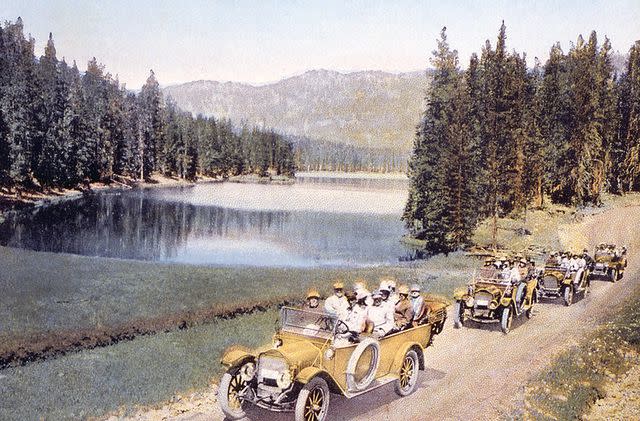
National Park Service
The route then heads north up Interstate 25 through Cheyenne, Wyoming, bending eastward on Highway 14 through Cody and to Yellowstone National Park. To follow in the group’s footsteps, stay at the Lake Yellowstone Hotel, and give the nation’s first national park a solid four days.
Related: 11 Best Places to Stay in Yellowstone National Park for Easy Access and Great Views
Glacier National Park
Then, it’s off on the Yellowstone-Glacier Bee Line Highway through White Sulphur Springs, Great Falls, Browning, and to Glacier National Park in Montana. In 1920, the group could count 60 glaciers and zero real roads; today, there are around two dozen glaciers in the park, and the Going-to-the-Sun Road is one of the country’s most scenic drives.
Mount Rainier National Park
Heading west on Montana’s Highway 2, from Kalispell toward Libby and the Idaho border, national forests abound in every direction into Spokane, Washington. Highway 2 runs out in Seattle, where the route turns south for Mount Rainier National Park. Be sure to visit Paradise on the south slope of the mountain — and be grateful you’re not traveling via mule team.
Crater Lake National Park
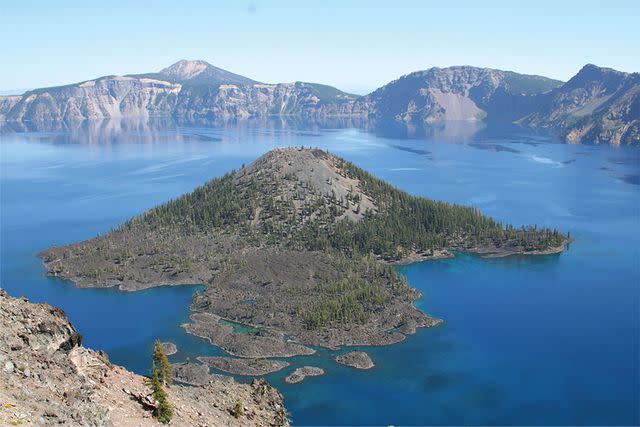
Robert J. Lillie / National Park Service
It’s a straight shot south through Olympia, Portland, and Eugene, ultimately reaching Crater Lake National Park, one of the best national parks in Oregon. Little has changed since 1920: The group stayed at the still-picturesque Crater Lake Lodge and completed the 33-mile Rim Drive, built just a year before their trip.
Lassen Volcanic National Park
From here, it’s California or bust, aiming for Redding and Lassen Volcanic National Park. Lassen has all four types of volcanoes, though the group never saw them, as the park had no roads in 1920.
Yosemite National Park and Sequoia and Kings Canyon National Parks
Some 300 miles further south, the granite vistas of Yosemite National Park take over, followed by a vertical wilderness of giants at Sequoia and Kings Canyon National Parks (the latter was known as General Grant National Park until 1940).
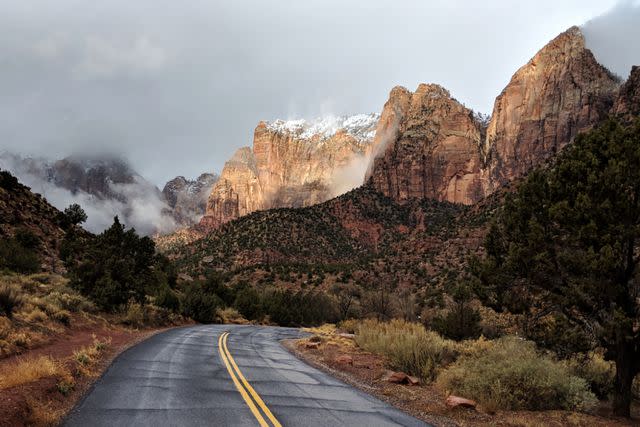
Zion National Park
Once in Los Angeles, the route shoots eastward on the National Old Trails Road, a.k.a. Route 66. From Barstow, take a detour up to Zion National Park — a 500-mile ask the group skipped to make time.
Grand Canyon National Park
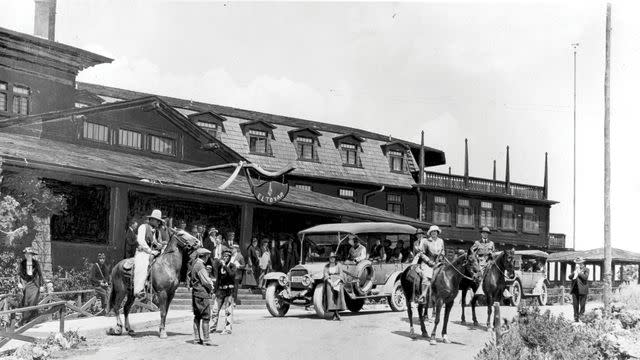
Xanterra Travel Collection
Then, head back south through Kingman, Williams, and to Grand Canyon National Park in Arizona, where the group spent three days at the now-historic El Tovar Hotel.
Petrified Forest National Park and Mesa Verde National Park
Depart for what’s now Petrified Forest National Park, Gallup, Durango, and Mesa Verde National Park, the group’s last stop on their national park road trip. They drove the narrow yet scenic Knife Edge Road, which closed in 1957 due to maintenance issues associated with the instability of the soil. Today, you can enjoy the same views on the two-mile Knife Edge Trail, which follows a portion of the historic road.
From Mesa Verde, it’s on to Salida and up Colorado’s spine via Pueblo, Colorado Springs, and finally, back to Denver. To sum up the trip, Stephen Mather — the NPS’ first director and a supporter of the route — put it best: “Each park will be found to be highly individual. The whole will be a revelation.”
For more Travel & Leisure news, make sure to sign up for our newsletter!
Read the original article on Travel & Leisure.

